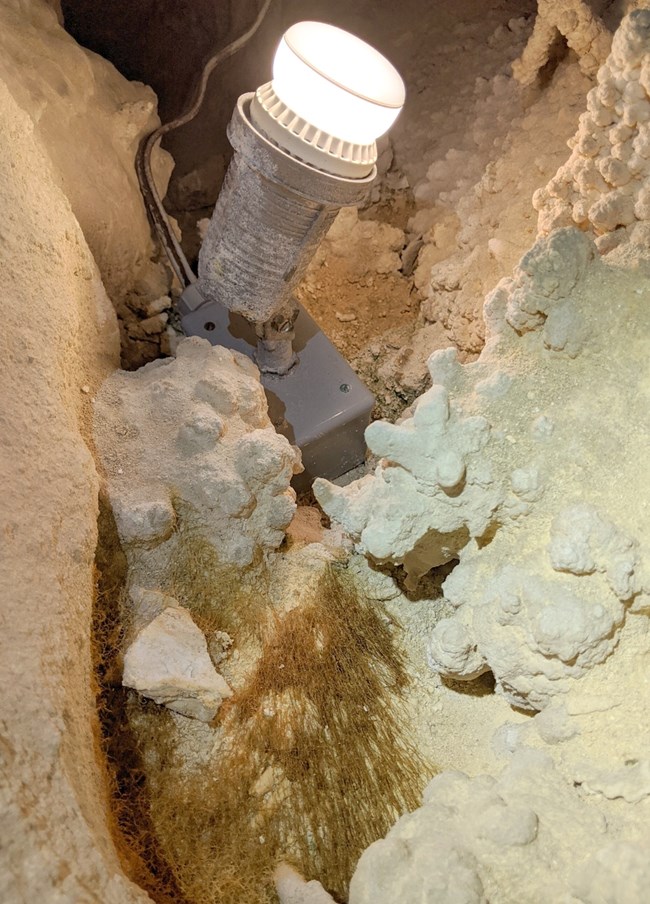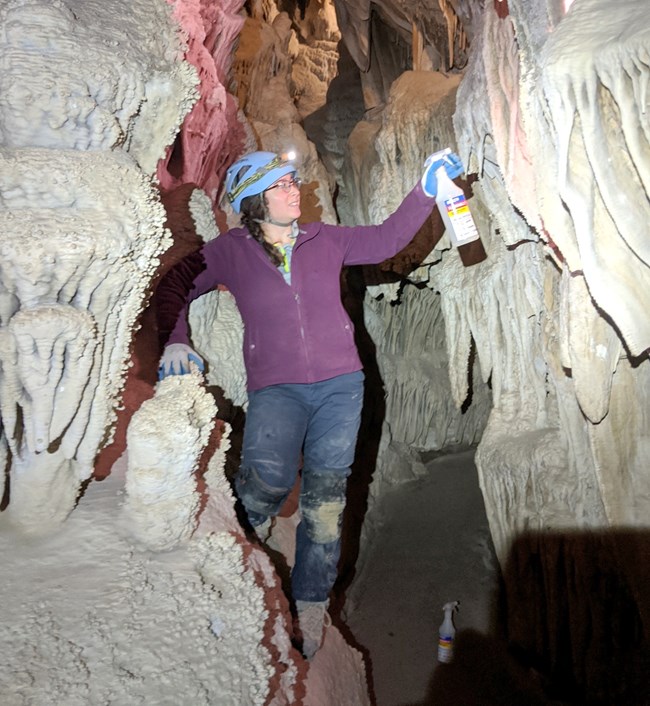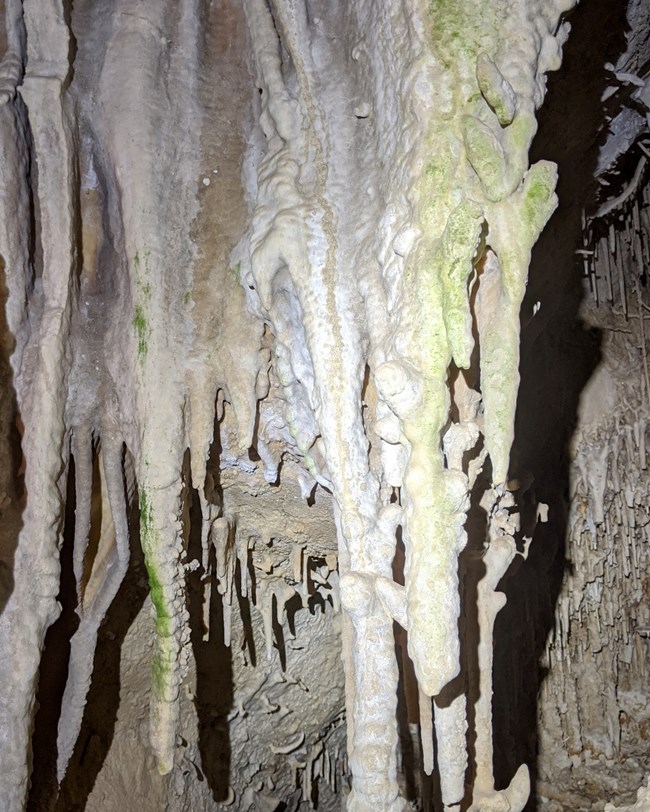Part of a series of articles titled The Midden - Great Basin National Park: Vol. 20, No. 1, Summer 2020.
Article
Making the Cave Less Green
This article was originally published in The Midden – Great Basin National Park: Vol. 20, No. 1, Summer 2020.

NPS Photo by Gretchen Baker
While we’re striving to make the park a greener park (more energy efficient and conservation-minded), we are also trying to make the cave less green, literally. You can see green in the cave next to the artificial cave lights, and that green is made up of algae, moss, and bacteria, sometimes referred to as lampenflora. The lampenflora provides an unnatural food source to the cave’s wildlife. It also can become part of the speleothems and damage their growth and beauty.

NPS Photo by Gretchen Baker


NPS Photo by Gretchen Baker
Last updated: February 8, 2024
